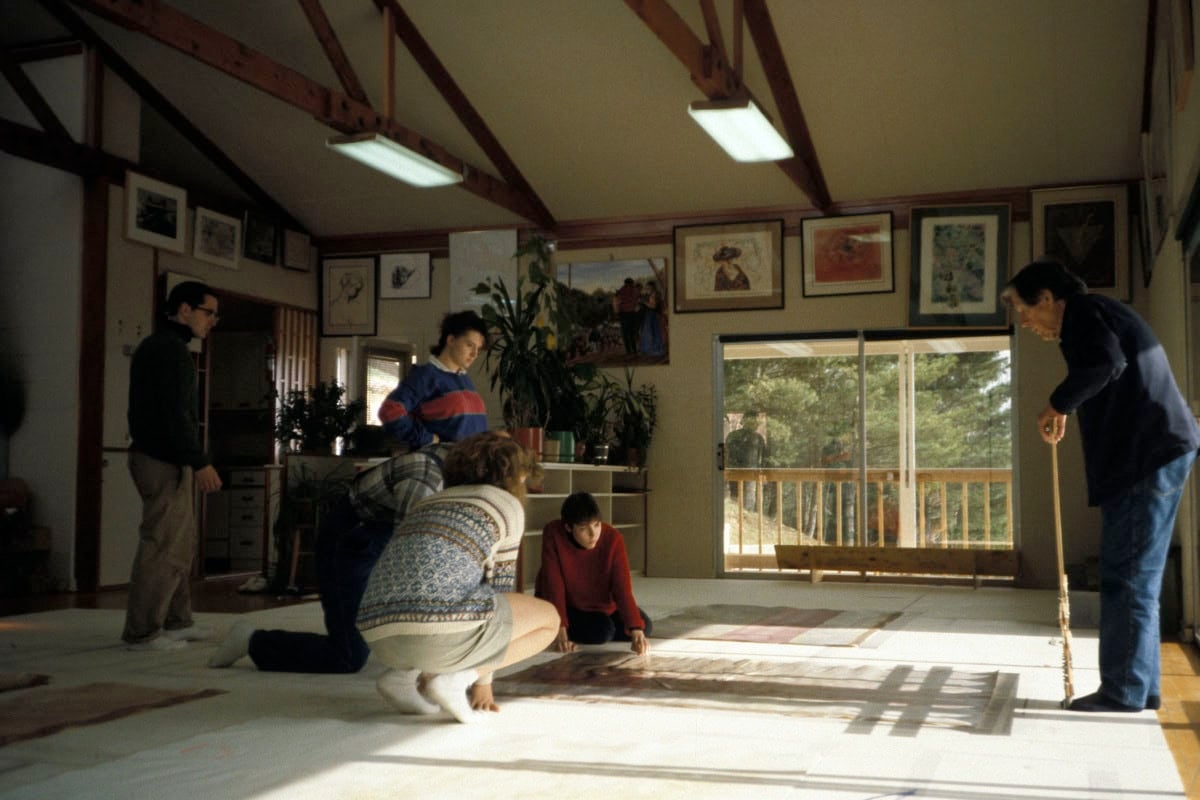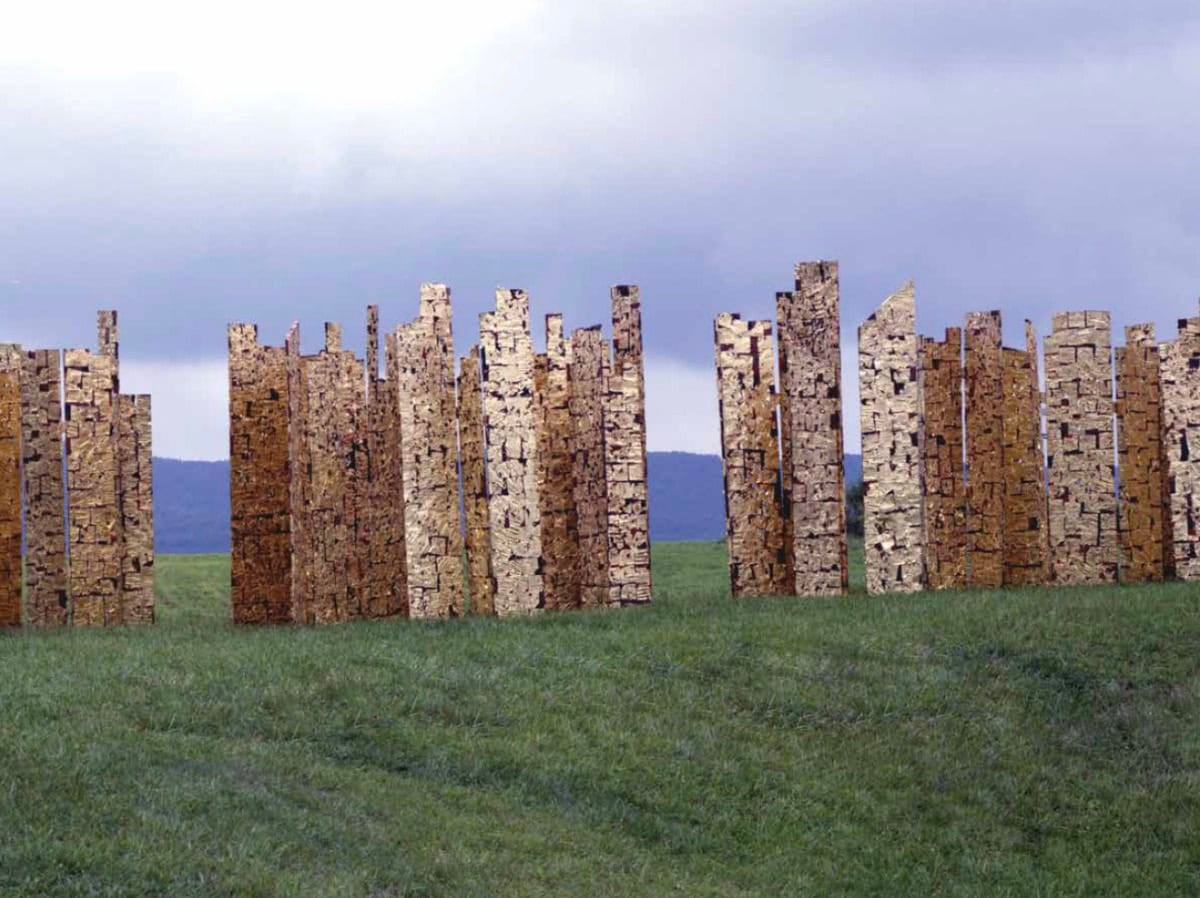
A few everyday things you find in a museum are bored spouses, lingering children, the underpaid security guard, and a lot of confusion. There is confusion from tourists who can’t find the bathroom. Confusion from the cynic who can’t find the value. And in the case of the Asheville Art Museum’s recent exhibit, Rural Avant-Garde, you would find me confused about what made this exhibit worth showing. As a fashionable millennial, and a Lady Gaga stan, when I hear the term “avant garde” I already have references in mind. Yet, it never once occurred to me to consider a piece of work from John Cage or about Appalachia, and I’ve studied music in North Carolina.
That is precisely what the museum has asked of me and of you. In their current exhibit, Rural Avant-Garde: The Mountain Lake Experience, the audience is asked to consider John Cage and the rest of the crew from the 1980s workshop as new, unusual or experimental. It’s not really up to me or even up for debate. History and culture has already lauded Mr. Cage and his peers as the pioneers in the 20th-century art movement. And who am I to argue that the mountains of Virginia are rural. So why the confusion?
The confusion comes because it feels like a millennial and, really, an American defect – one that stems from too many trophies and short-form internet videos. For us, the avant-garde needs to be shocking. Shock value is what American consumerism has taught us is new, different and yes, avant-garde. That shock in fact has value. But after opening my mind to the oxymoron that anything of interest can happen in the middle of nowhere, I don’t think that shock is the most valuable path forward.
For instance, John Cage’s famous 4’33, is not radical or game-changing because the music was so “out there” but because the piece completely clashes with every expectation you have of a musical performance. You become confused. You start to question. And you make the conscious effort to either leave or see it through. And that’s how I felt as I walked through the exhibit. While consuming the works of John Cage, Ray Kass, Howard Finster, and other collaborators of the storied Mountain Lake Workshop, I wandered and wondered how it all came together.

Perhaps it was in the presentation, but I’ll admit to being thrown. Upon entry, you’re introduced to a life-size wood piece by Jiro Okura. Beautiful synthetic gold leaf shimmers in the middle of the room, and then as you start to walk as you read (left to right), your eyes begin to travel through a series of smaller pieces and land on the evidence of a performance of John Cage’s STEPS. You venture through a few Kass pieces and Sally and Jessie Mann’s Metempsychosis Diptych #1 and #2 but then you sort of crash into these massive works by Howard Finster (Belly Full of Hate, Burn Your Candle into Another World) and James De La Vega (Talking Walls). Massive works of wood, consuming all the air in the room and the space on the walls. Bold, irreverent works that stand on their own even when looking somewhat out of place. Then, after you’ve rounded the corner, you land on the exhibit “highlight” – New River Rocks and Washes by John Cage. And after you’ve stared at the portrayal of rocks in a river bending like dancers blowing with the wind, the exhibit just… ends. Jarringly. You walk towards the door to see a display of the tools that made it all happen – feathers, rocks, the world’s seemingly largest watercolor trough – and that’s it. Either you get it, you hate it, or you’re simply baffled. The same phenomenon that happens every time you see a Margiela show or a Lady Gaga appearance in New York City. And that’s how I knew that the museum had won me over.
The work of the Mountain Lake Workshop is relevant not because it’s new or any more unusual than anything else, but because it’s experimental. Ray Kass’ 1980 integration of art and science invited artists to think outside the realms of their own studio. To ask questions of imposed limitations and dare to find solutions. And this exhibit, organized by the Longwood Center for the Visual Arts, invites you to experience the clash of experimentation. De La Vega once said, “the rich control the destiny of the poor, but the intelligent man controls his own,” and the sentiment feels poignant to the collective. Those who think will find ways to create. Those who dream will rise to the occasion. Those who have questions will seek answers. Those who have answers will perform 4’33. Those who lack clarity will deem the work pedantic. Those who lack romance will find no value. And everyone else, however they manage, will simply experience the confusion of the clash.




